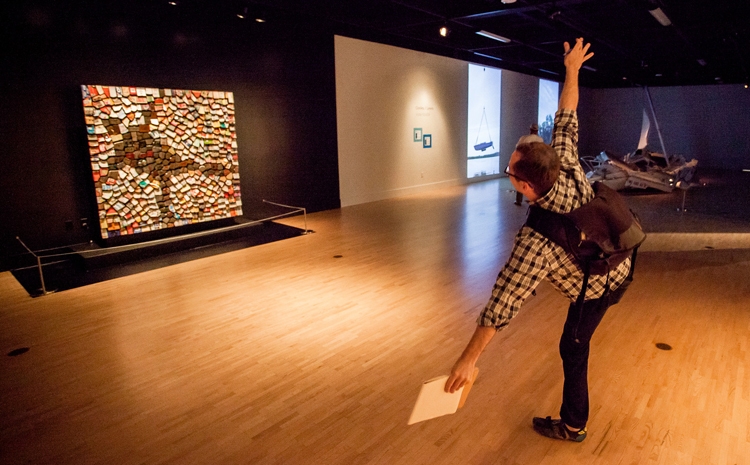Picture this: you just bought the latest release from your favorite band. You can’t wait to listen to it from start to finish, to really let it unfold, to go back and give it another go after the first run through.
Now imagine, would you do this on your tiny little laptop in a crowded space with lots of noise all around?
Of course not! You would put it on your best sound system, with proper speakers and minimal distraction, and really immerse yourself in the experience. You would take time to consider the songs on their own as well as part of the entire album, and you might also appreciate the order in which they are presented and the theme that develops throughout.
Why? Because context matters. You want to optimize the music's presentation so you can best enjoy what it has to offer.
So it goes with art as well. Context matters. Curating matters.
While traditional art organizations and many museum-goers are long familiar with curatorial practices, with the radically open phenomenon known as ArtPrize now entering its sixth year in Grand Rapids, the general public is becoming increasingly aware of the value of curating as well.
No matter the venue, whether a traditional gallery or non-traditional location, visitors can often “feel” when works of art are presented in a thoughtful way. When each work can be appreciated on its own and also enhanced by its surroundings. In the same way, one can also feel disconnected with the art when the presentation is cluttered and mismatched.
“Essentially, a curator is one who selects artists and artwork, organizes the selection and presents it in a way that creates new meanings and provides context,” said Michele Bosak, curator of exhibitions at Kendall College of Art & Design at Ferris State University.
Cindy Buckner, associate curator at the Grand Rapids Art Museum, explains the process in further detail.
“In curating an exhibition, many things are taken into consideration: the size and scale of the pieces relative to each other, how the colors of the works look in a given grouping, whether the subject matters of the works are comparable or complement each other, how the piece relates to the space of the room, etc.” Buckner said. “By taking all these things into account, each work of art is shown to its best advantage, and ideally the context in which it is placed can produce new insights into the work.”
While professional curators such as Bosak and Buckner dedicate a significant amount of time to keeping up with what’s happening in the art world, including the new artists, exhibitions and galleries that are creating an impact around the world, those new to the art of curating should not be shy about approaching the task with a strong personal commitment.
When asked what three most important things a non-traditional venue should consider when curating an exhibition, Bosak responded: Authorship. Vision. Destabilizing.
“A curator is an author of sorts and frames the meaning of the work," she said. "Choose work that speaks to you. If you cannot be excited about the work and create context, how do you expect your audience to be interested?"
Maintaining your vision is important as well. Bosak said curators can to this by creating a short blurb that describes the essence of the show.
“When ever you feel off-track or questioning too many aspects, return to that short written description."
In terms of destabilizing, Bosak said you have to consider works by themselves and next to one another.
"A curator’s job is to destabilize the audience by creating possibilities for new meanings to occur. Always consider the work on an individual level and then also in the larger context of the exhibition. What happens between two works when placed in proximity to each other (think about placement in terms of aesthetic, context, proportion)? Does it strengthen the interpretation?”
Buckner agreed with the importance of placement, and added a couple of words of practical advice as well.
“Leave a good amount of space between the pieces so that the viewers can appreciate them. Sometimes less is more,” she said. “[And it’s] almost always better to install a work of art so that it is centered at eye-level, unless it was made to be seen from a different viewpoint.”
Ideally, the experience with a well-curated exhibition should leave visitors walking away as if they just spent quality time listening to their favorite album. Satisfied yet wanting more, with thoughts and ideas about the work still lingering in their minds.





